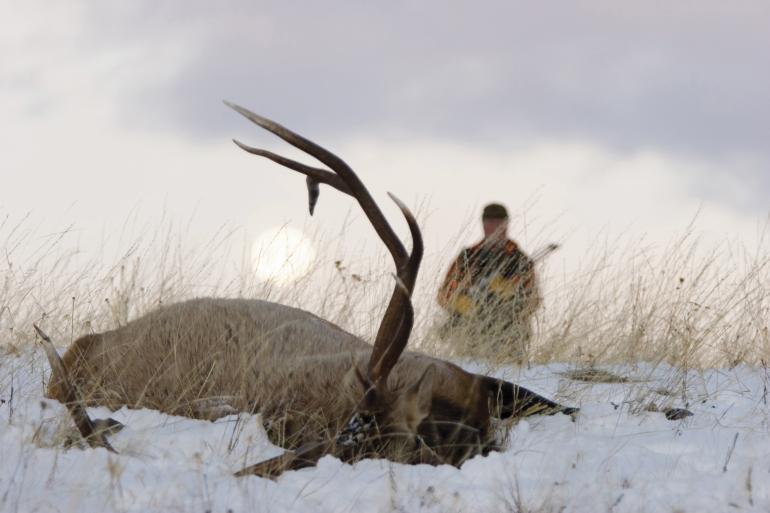Get the Lead Out
Like a lot of Montanans, I’ve done my share of hunting—it’s a seasonal tradition, and I enjoy the healthy, high-quality protein I harvest for my family and friends.
So when I saw a 2007 news article involving a North Dakota study that found a high percentage of lead contamination in hunter-harvested, commercially packaged venison, I decided to investigate further.
Here’s a fact: lead is a neurotoxin. The negative effect of lead on human health is well documented—it can lead to kidney failure, brain disorders, convulsions, blindness, and more physiological problems than I care to list. Here’s another fact: there is no evidence that eating game killed with lead bullets or shot results in poisoning. Studies have found elevated levels of lead in people who eat more lead-killed game, but not at levels confidently associated with any damage.
Then throw in that the accumulated effects of ingesting lead over time are difficult to identify and may be non-specific. Progressive decline in mental function (something I often suspect in myself and have been accused of by my wife) can be impossible to directly associate with all those deer I’ve eaten. Is it the lead or too much sex, drugs, and rock ‘n’ roll?
I’ve been shooting the same ammunition for a long time with good results. But I couldn’t, in good conscience, share game meat that could be even potentially harmful.
More research convinced me of another concern: poisoning scavenging wildlife. From the time I hiked back in to retrieve my first wilderness buck and found an eagle consuming the hams, I’ve felt I was making a contribution when I left offal behind. But there is solid evidence that lead bullet fragments and spent lead shot consumed by eagles, waterfowl, and upland birds have negative effects.
To me, it’s simply unethical to harm non-target wildlife.
Ultimately, I decided to explore the world of non-lead hunting ammunition, and what I found impressed me to the point where I felt like a neophyte. A variety of bullet and factory-loaded cartridge options are available in local sporting-goods stores—to save time, I simply purchased several different kinds.
After research and actual use, I’m convinced that the non-lead copper solid and copper alloy bullets are not only safer for people and wildlife, but are also more effective. Consider that lead, whether copper-jacketed or not, is so soft that it fragments quickly and easily. This, combined with modern high velocities, disperses lead particles a long distance from the point of impact and along the wound channel. Particles are often too small to see or feel. A typical copper-jacketed lead hunting bullet will lose 30% or more of its mass as it moves through the body. A full copper bullet will lose 2% at most. Manufacturers often claim 100% mass retention, and keeping the bullet together is the goal for an effective kill.
Last fall, I used a 12-gauge shotgun with a solid copper sabot slug (Remington) for two deer and a solid copper bullet (168 grain Barnes) in my 30-06 for an elk and a deer. I was extremely impressed with performance and what appeared to be a great reduction in “blood shot” meat. These cartridges were more expensive, but not much more than other high-quality, factory-loaded lead core ammunition. Considering I only shot one cartridge per animal, and most of my shooting was done to learn performance, I don’t expect the expense to become an issue.
In today’s world, I like to minimize my impact, and it is very likely I will never again take another game animal with lead. Hunting is a tradition I’ll keep; the leaded bullet I won’t. For more information (including a variety of research articles and editorials) visit huntingwithnonlead.org or leadfreehunting.com.
Ken Sinay is the former director of Yellowstone Safari Company (yellowstonesafari.com) and has worked as a hunting guide for over 20 years for Wilderness Connections, an outfitter located near Gardiner (wildcon.com).












